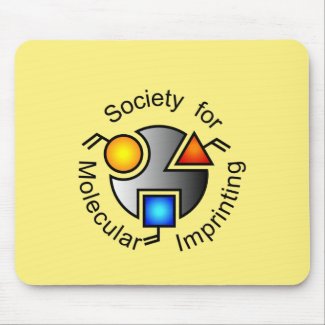
Authors: Ren KN, Banaei N, Zare RN
Article Title: Sorting Bacterium Cells Using Cell-Imprinted Polymer Thin Films: From Concept to Applications.
Publication date: 2014
Journal: Biophysical Journal
Volume: 106
Issue: (2, Supplement 1)
Page numbers: 245a.
DOI: 10.1016/j.bpj.2013.11.1437
Alternative URL: http://www.sciencedirect.com/science/article/pii/S0006349513026957
Abstract: Cell imprinting is a recently developed technology that captures the structural and chemical information on the surface of cells on a polymer surface through template-assisted assembly of functional groups. A polymer is cured around template cells that are removed subsequently, leaving complementary cavities that not only spatially fit but also chemically recognize the target cells {ACS Nano, 6: 4314, 2012}. The cell-imprinted materials thereby function as artificial receptors, which are considerably less expensive to produce and more durable than natural receptors and could potentially be broadly used for cell sorting. One promising potential application is the detection of pathogens causing infectious diseases. However, the involvement of pathogens in the production of the imprinted material as well as in the cell capturing process brings occupational risk of infection. Most recently, we discovered that inactivated bacteria can be selectively captured by a polymer film imprinted with the bacteria inactivated in the same way, avoiding the use of live virulent bacteria; moreover, the inactivation strategies, especially those utilizing chemical reagents, resulted in better selectivity of capture than when living cells were used {ACS Nano, 7: 6031, 2013}. This inactivation process may have played two roles: (1) to eliminate the secretion of extracellular matrix, which helps expose the surface of the cells during imprinting; (2) to fix the cells, which helps preserve the structural and chemical information on their surface. Utilizing a cell-imprinted thin film, we are developing a rapid, culture-free, low-cost and high-sensitivity diagnosis for tuberculosis infection, which may fulfill the significant demand of effective and affordable diagnosis for tuberculosis in low-income countries. Also, we are developing an inexpensive cell-imprinted wipe for rapid detection of bio-contamination on solid surfaces, which may have broad applications in food safety control and public security
Template and target information: bacteria



Join the Society for Molecular Imprinting

New items RSS feed
Sign-up for e-mail updates:
Choose between receiving an occasional newsletter or more frequent e-mail alerts.
Click here to go to the sign-up page.
Is your name elemental or peptidic? Enter your name and find out by clicking either of the buttons below!
Other products you may like:
 MIPdatabase
MIPdatabase









